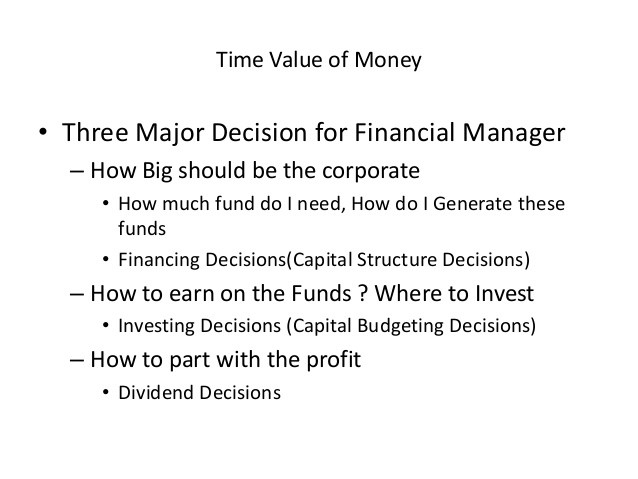What is TVM (Time Value of Money)
Post on: 25 Октябрь, 2016 No Comment

The notion that a dollar today is preferable to a dollar some time in the future is intuitive enough for most people to grasp without the use of models and mathematics. The principles of present value provide more backing for this statement, however, and enable us to calculate exactly how much a dollar some time in the future is worth in todays dollars and to move cash flows across time. Present value is a concept that is intuitively appealing, simple to compute, and has a wide range of applications. It is useful in decision-making ranging from simple personal decisions (buying a house, saving for a childs education and estimating income in retirement) to more complex corporate financial decisions (picking projects in which to invest as well as the right financing mix for these projects).
Time Lines and Notation
Dealing with cash flows that are at different points in time is made easier using a time line that shows both the timing and the amount of each cash flow in a stream. Thus, a cash flow stream of $100 at the end of each of the next 4 years can be depicted on a time line like the one depicted below.
In the figure, 0 refers to right now. A cash flow that occurs at time 0 is therefore already in present value terms and does not need to be adjusted for time value. A distinction must be made here between a period of time and a point in time. The portion of the time line between 0 and 1 refers to period 1, which, in this example, is the first year. The cash flow that occurs at the point in time 1 refers to the cash flow that occurs at the end of period 1. The discount rate, which is 10% in this example, is specified for each period on the time line and may be different for each period. Note that in present value terms, a cash flow that occurs at the end of period 1 is the equivalent of a cash flow that occurs at the beginning of period 2.
Cash flows can be either positive or negative; positive cash flows are called cash inflows and negative cash flows are called cash outflows. For notational purposes, the following abbreviations are used:
Notation Stands for
PV Present Value
FV Future Value
Cft Cash flow at the end of period t A Annuity: Constant cash flows over Numberseveral periods
k Discount Rate (also often abbreviated as r or i )
g Expected growth rate
n of years over which cash flows are received or paid
The Intuitive Basis for Present Value
There are three reasons why a cash flow in the future is worth less than a similar cash flow today.
Individuals prefer present consumption to future consumption. People would have to be offered more in the future to give up present consumption. If the preference for current consumption is strong, individuals will have to be offered much more in terms of future consumption to give up current consumption, a trade-off that is captured by a high real rate of return or discount rate. Conversely, when the preference for current consumption is weaker, individuals will settle for less in terms of future consumption and, by extension, a low real rate of return or discount rate.
When there is monetary inflation, the value of currency decreases over time. The greater the inflation, the greater the difference in value between a cash flow today and the same cash flow in the future.
A promised cash flow might not be delivered for a number of reasons: the promisor might default on the payment, the promisee might not be around to receive payment, or some other contingency might intervene to prevent the promised payment from being made or to reduce it. Any uncertainty or risk associated with the cash flow in the future reduces the value of the cash flow today.
The process by which future cash flows are adjusted to reflect these factors is called discounting, and the magnitude of these factors is reflected in the discount rate. The discount rate incorporates all of the above-mentioned factors. In fact, the discount rate can be viewed as a composite of the expected real return (reflecting consumption preferences in the aggregate over the investing population), the expected inflation rate (to capture the deterioration in the purchasing power of the cash flow), and the uncertainty associated with the cash flow.














